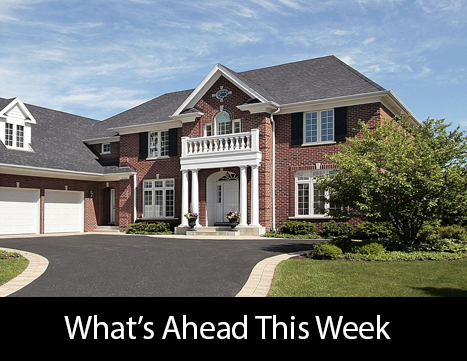What’s Ahead For Mortgage Rates This Week – February 5th, 2018
 Last week’s economic releases included readings on pending home sales, Case-Shiller Home Price Indices and construction spending. The Federal Open Market Committee of the Federal Reserve released its monthly statement and weekly readings on mortgage rates and new jobless claims were released. Last week’s economic readings wrapped with a report on consumer confidence.
Last week’s economic releases included readings on pending home sales, Case-Shiller Home Price Indices and construction spending. The Federal Open Market Committee of the Federal Reserve released its monthly statement and weekly readings on mortgage rates and new jobless claims were released. Last week’s economic readings wrapped with a report on consumer confidence.
Case-Shiller: Home Prices Rise in November
Home prices rose an average of 0.70 percent monthly and 6.20 percent year-over-year according to Case-Shiller’s national home price index for November. Seattle, Washington posted the highest year-over-year home price growth rate at 12.70 percent. Las Vegas, Nevada posted year-over-year home price growth of 10.60 percent and San Francisco, California posted a home price growth rate of 9.10 percent. Home price gains were attributed to slim supplies of available homes in many areas.
While analysts suggested that strong housing markets (as reflected by high demand for homes) were good for the economy, issues of affordability, slim inventories of homes available and obstacles facing builders continue to impact housing markets.
Recent gains in home prices are fueled by artificially high demand caused by low inventories of homes for sale. Builders cited shortages of labor and buildable lots and said increasing materials costs were impacting rising prices for new homes. Construction spending rose 0.70 percent in December, which exceeded expectations of 0.50 percent and November’s month-to-month reading of 0.60 percent growth in construction spending.
Pending Home Sales Rise, Key Fed Interest Rate Unchanged
The National Association of Realtors® reported 0.50 percent growth in pending home sales in December and the highest month-to-month reading since March 2017. Year-over-year pending home sales gained only 0.50 percent. Pending sales reflect purchase contracts signed with sales not yet closed.
The Federal Reserve’s Federal Open Market Committee announced that it would not raise the target federal funds range of 1.25 to 1.50 percent, but indicated that inflation was nearing the Fed’s goal of 2 percent annually. Analysts said this could foreshadow a rate increase at the Committee’s next meeting in March.
Mortgage Rates, Weekly Jobless Claims
Mortgage rates rose last week according to Freddie Mac’s weekly Primary Mortgage Markets Survey. Rates for a 30-year fixed rate mortgage rose by seven basis points to an average of 4.22 percent; the average rate for a 15-year fixed rate mortgage rose six basis points to 3.68 percent. The average rate for a 5/1 adjustable rate mortgage ticked up one basis point to 3.53 percent. Discount points averaged 0.50 percent for fixed rate mortgages and 0.40 percent for 5/1 adjustable rate mortgages.
First-time jobless claims dipped by 1000 claims to 230,000claims. Analysts expected 240,000 new claims. The University of Michigan reported a lower reading for consumer sentiment in January with an index reading of 95.7 as compared to an expected reading of 95.0 and December’s reading of 95.90. Consumer sentiment remains near pre-recession highs. Consumers cited tax breaks and large stock market gains as the basis for high confidence.
What‘s Ahead
This week’s economic releases include readings on job openings and consumer credit along with weekly reports on mortgage rates and new jobless claims.

 Last week’s economic reports included S&P Case-Shiller Home Price Indexes, along with readings on new and pending home sales. Recurring weekly reports on mortgage rates and new jobless claims were also released.
Last week’s economic reports included S&P Case-Shiller Home Price Indexes, along with readings on new and pending home sales. Recurring weekly reports on mortgage rates and new jobless claims were also released. Last week’s economic news was abundant with releases on home builder sentiment, housing starts, building permits, sales of previously owned homes. The Federal Open Market Committee of the Federal Reserve released its customary statement at the conclusion of its meeting; Fed Chair Janet Yellen also gave a press conference. Weekly readings on new jobless claims and mortgage rates were released as usual.
Last week’s economic news was abundant with releases on home builder sentiment, housing starts, building permits, sales of previously owned homes. The Federal Open Market Committee of the Federal Reserve released its customary statement at the conclusion of its meeting; Fed Chair Janet Yellen also gave a press conference. Weekly readings on new jobless claims and mortgage rates were released as usual.